A stepping stone crossing a stream defines the word “ripple” to garden visitors’ delight.
Last month, I was lucky enough to visit Little Sparta, Ian Hamilton Finlay’s marvelous garden in the Pentland Hills below Edinburgh, Scotland. This five-acre garden is reached after a ten minute hike uphill on a track between fields of cavorting sheep and their little lambs.
You’re surrounded by barren hills, windswept but verdant, until you reach a copse of trees planted by the poet and artist, Ian Hamilton Finlay and his wife Sue.
Voted in a poll conducted in 2004 as the most important work of Scottish art, the garden is filled with ‘poem-objects’—nearly 300 in all.
Everywhere you look, Finlay has added words to bring to life the typical elements of gardens: stepping stones, obelisks, gateposts, bridges, styles, walls.
Each of Finlay’s poem-objects is set elegantly and appropriately into vignettes; one after the other reached by narrow little paths of varying materials and surrounded by the simplest of wildflowers.
The word “pretty” is repeated along this curving path—why? Only Mr. Finlay knows.
The words of Virgil and other ancients are enshrined throughout; Classicism abounds. Each set of words inscribes itself into your mind and you can’t help but vocalize them to yourself as you confront them at every turn.
One becomes immediately immersed in this garden, under low-canopied trees, following narrow, single-person walks that twist past focal points and turn toward places to pause.
Here, in the middle of rural Scotland, are boat terms, World War II navy vessels, drawn and described in the briefest of language. Greek and Latin phrases require more than my high school training to translate; plays on words abound. There’s so much to learn, so much to contemplate, so much to admire in the perfection of this immaculate garden, so hidden away from the world by an agoraphobic artist.
And then there are the objects themselves—the traditional pineapples that act as finials on formal gateposts are here carved as hand grenades, equipped with a pull ring when needed.
But it’s not just the vocal points that are wonderful here; it’s the settings themselves and the paths to them that are completely satisfying as a designed experience. Nothing is out of place; all is set just so without being pert or bland or overdone or boring—not ever.
You can see the phases of this artist’s life in the worlds he created in his gardens, and each is bolder and more surprising than the next. Its modesty entices, always, and keeps us completely immersed for the two hours or so that it takes to wander through and delight in this wonderful place.
I met the two gardeners who were hard at work. George (left) is an artist turned horticulturist; Ralph (right) worked closely with Mr. Finlay on the newer sections of the garden.
Mr. Finlay died in 2006, and the Little Sparta Trust has taken over to ensure that the garden remains as he would have liked. How lucky we were to “possess” this place for ourselves, to meet the gardeners who knew the artist, and to hear stories of its creation, its symbolism, and its care. This modest garden now ranks as one of my favorite in all the world.
Finlay’s sense of humor can be found throughout the garden, combined with charm, grace, and always another surprise ahead makes it one of the great gardens of the world.
Note: For more information on Finlay’s work, visit Artsy’s wonderful Ian Hamilton Finlay page.

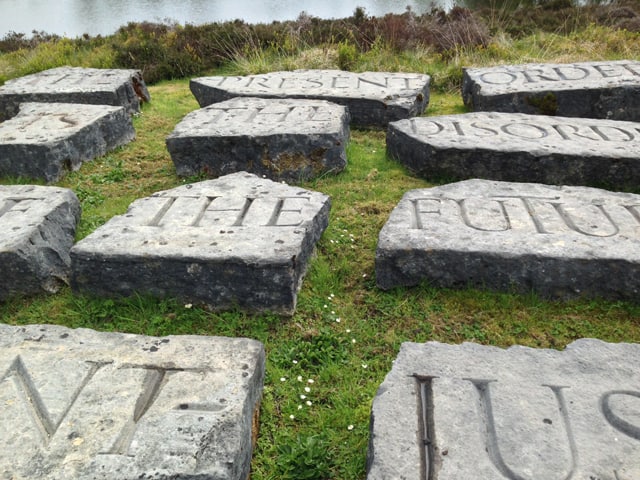
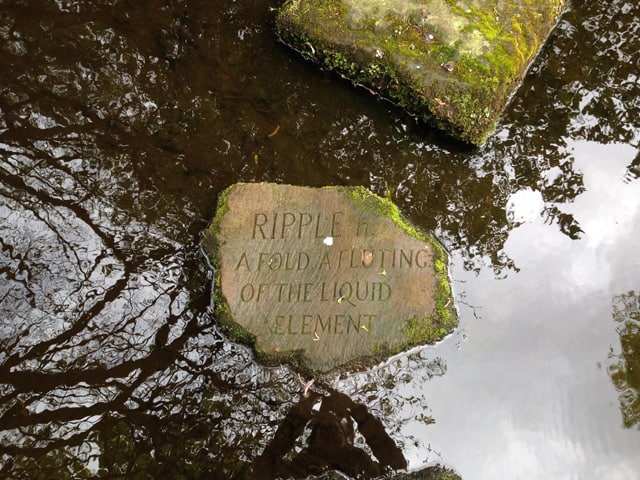
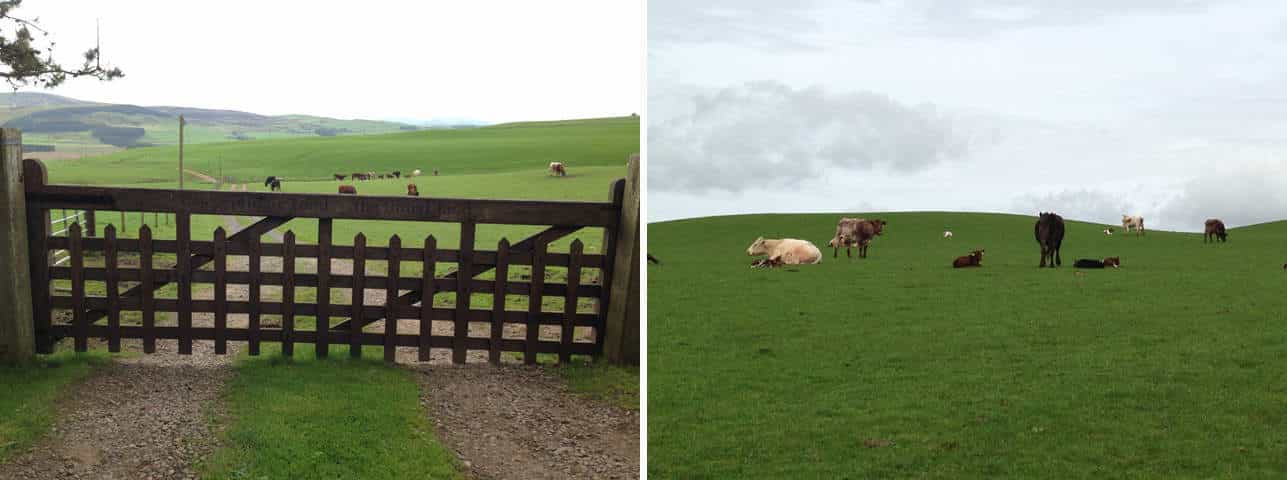
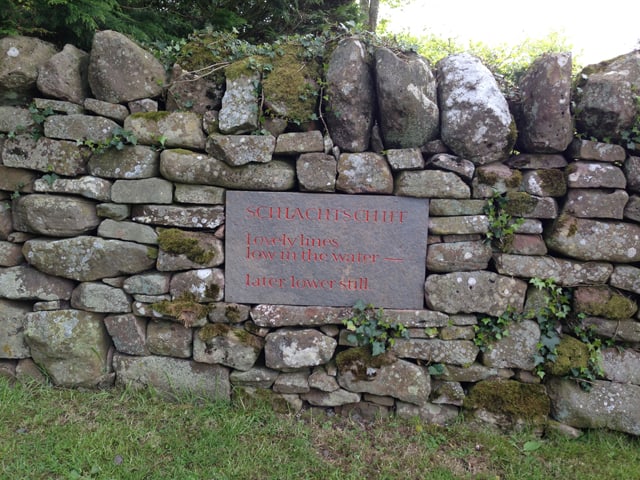
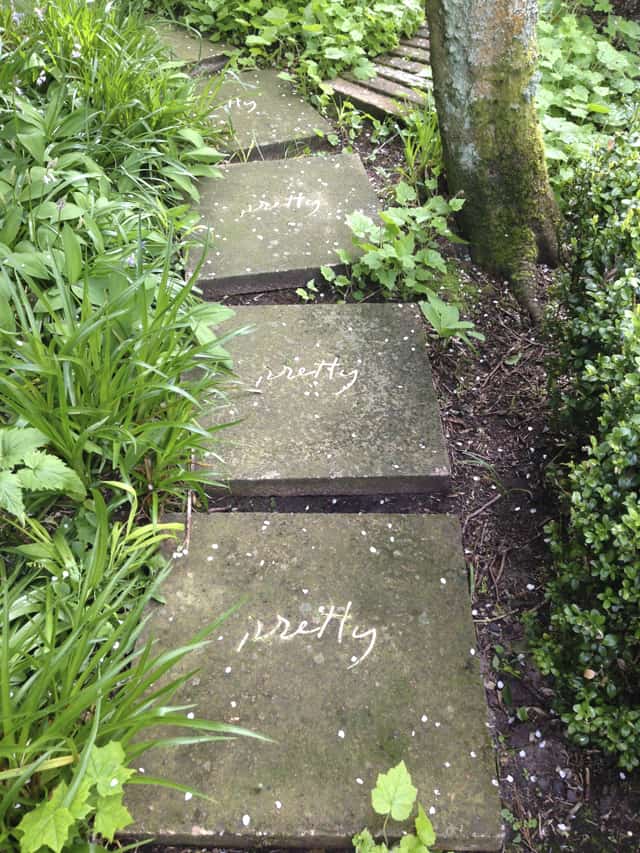
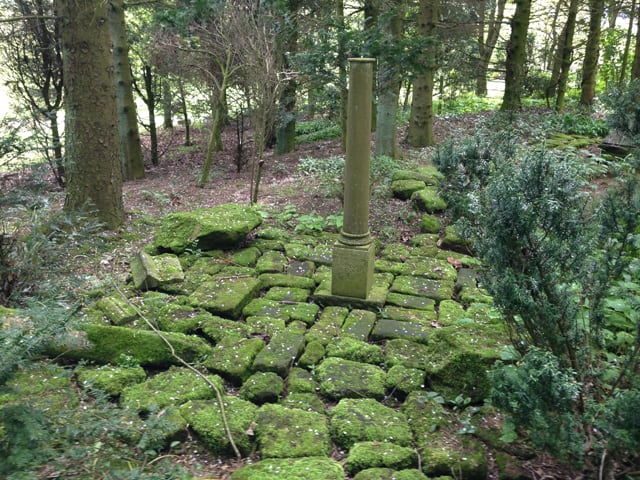
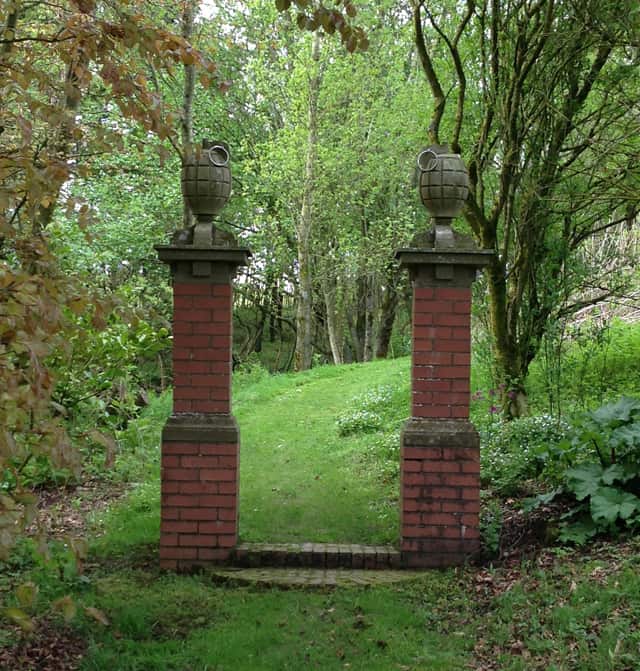
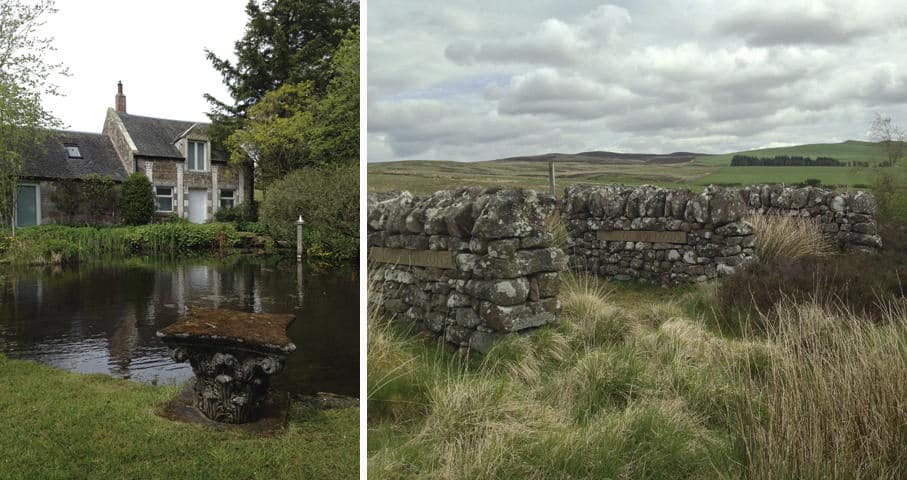


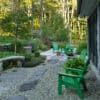
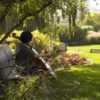


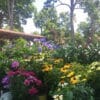
Magical! And the wordplay is catching: “. . . It’s not just the vocal points . . .” (I caught that.)